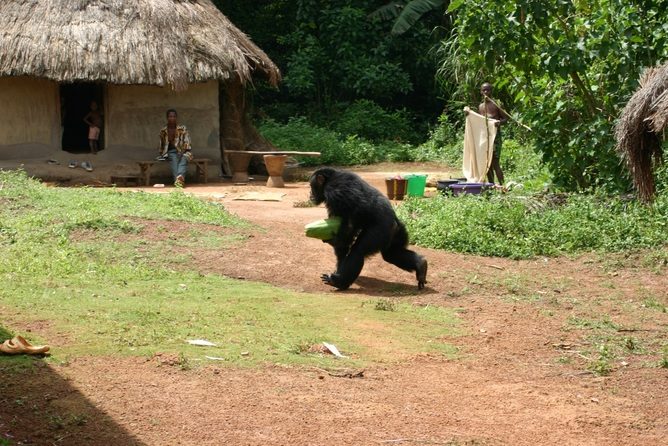From the Field | Guest Post
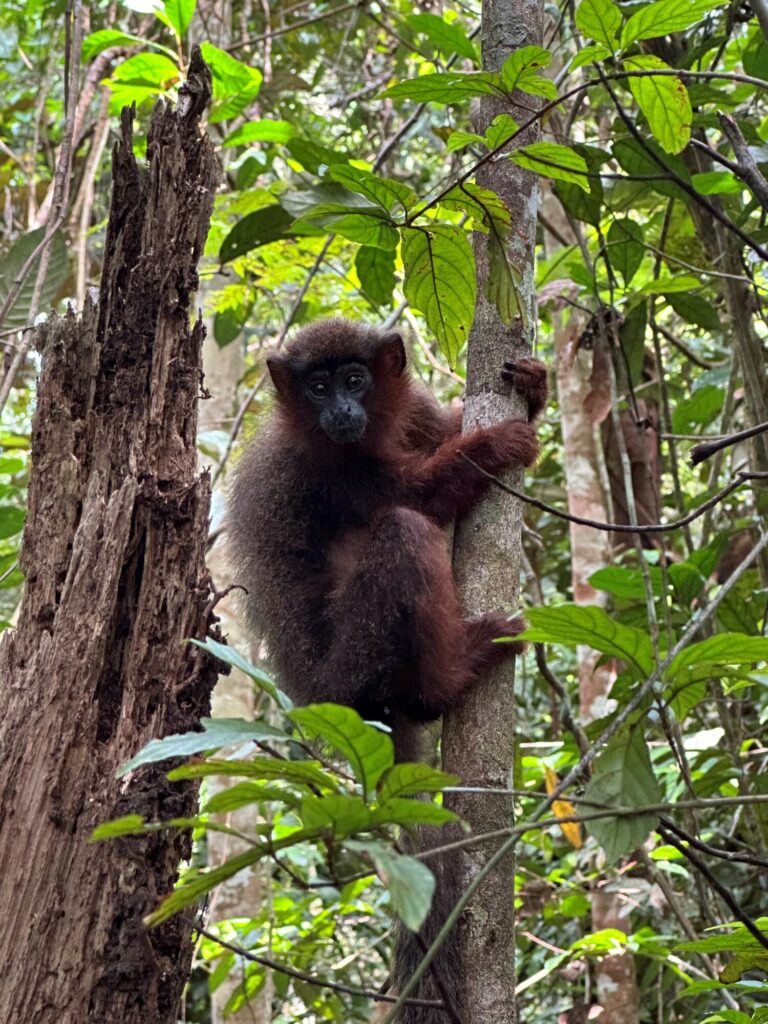
Photo Source: David Wood
by David B. Wood, edited by Cassidy Cooper
The worst part is all the sweat bees. The mosquitos can be repelled, but nothing stops the sweat bees. The ants don’t want to mess with you. They’ll defend themselves and their homes. They’ll attack if frightened and confused, but they have work to do and aren’t easily distracted. The sweat bees are at work too, but in a much more bothersome way. They work on your hands, your arms, and inside your boots. They’re at work in your ears, up your nose, and on the surface of your eyeballs. These bees are searching for salt. Finding salts in the Amazon Rainforest isn’t very easy: not many animals sweat. But we sweat, and the sweat bees at Estación Biológica Quebrada Blanco (EBQB), near Iquitos Peru, find plenty of the salt they’re looking for right off the skin of us researchers.
Although we endure the bugs, we’re not here for them. We’re not here for the burning equatorial sun or the drenching tropical downpours either. We’re not here for the snakes, the parrots, the peccary, the river otters, the pink dolphins, the tapirs, or the giant anteaters, although we see them. We’re not even here for the capuchin monkeys, the wooly monkeys, the squirrel monkeys, or the owl monkeys. We’re here for the titi monkeys….and not just any titi monkeys: baby titi monkeys. Since September 2022, I’ve spent 9 months following newborn titi monkeys around the jungle to watch how their moms and dads care for them and help them survive and mature into adulthood. That means that all the indignities of the sweat bees–and the distractions of the rest of the biodiversity of the tropical rainforest—don’t really weigh on my mind.
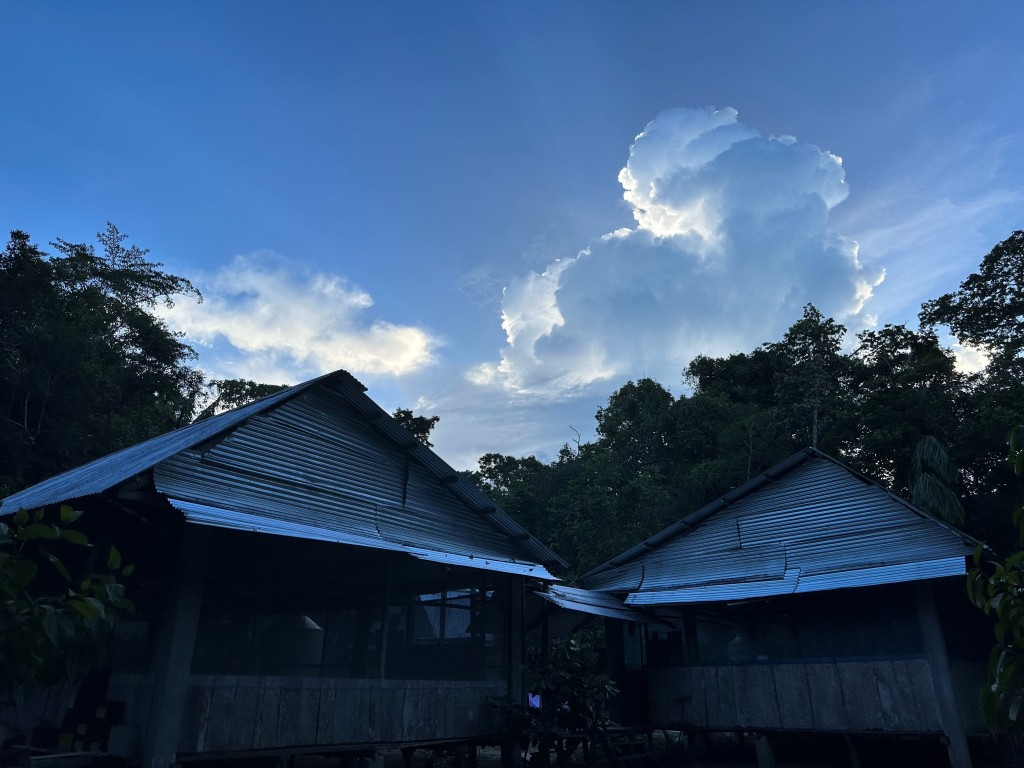
Photo Source: David Wood
Titis are unique animals. They’re primates, like us, but of the monkey variety. They’re small (all fluffed up they are about the size of an American football), and usually weigh less than 3 pounds. There’s a wide variety of them, and they all live in the Amazon…. Except for the ones who live in the Primate Center in Davis, California.
The most unique thing about these monkeys is that they may be the most attentive mammalian fathers (humans included)! Infant care by dads isn’t all that rare across the whole animal kingdom. There are plenty of fish species where the dads are the primary caretakers of the next generation, and bird dads typically spend as much time sitting on the eggs as the moms. But mammals are different. Two of the hallmark adaptations involved in the evolution of (most) of us mammals are internal gestation (except the platypus, a reminder of the lost diversity of the mammals of the past) and lactation: two very helpful things only females can do.
Before mammals hit the evolutionary scene, most animals laid eggs. Some reptiles evolved a nifty trick of keeping their eggs inside their bodies, allowing them to take the eggs with them when they search for food and therefore keeping them safe from predators. But, these eggs were still eggs. The developing fetus was wrapped in an impermeable shell that nothing can cross. Developing fetuses need both materials and energy inside the egg. They need the raw materials to build their bodies, and the energy to move those raw materials around. In an egg, the only energy source is the yolk, and the amount of yolk that’s inside the egg when it developed is all that the fetus gets. Internal gestation, on the other hand, literally connects the developing fetus to the mother via an umbilical cord and a placenta. This gives mammalian mothers a lot more control in the environment their fetus develops in, and it has turned out to be a pretty successful reproductive strategy. The mother and the fetus can send signals back and forth to coordinate the fetus’ materials and energetic needs with the mother’s ability to invest in the fetus.
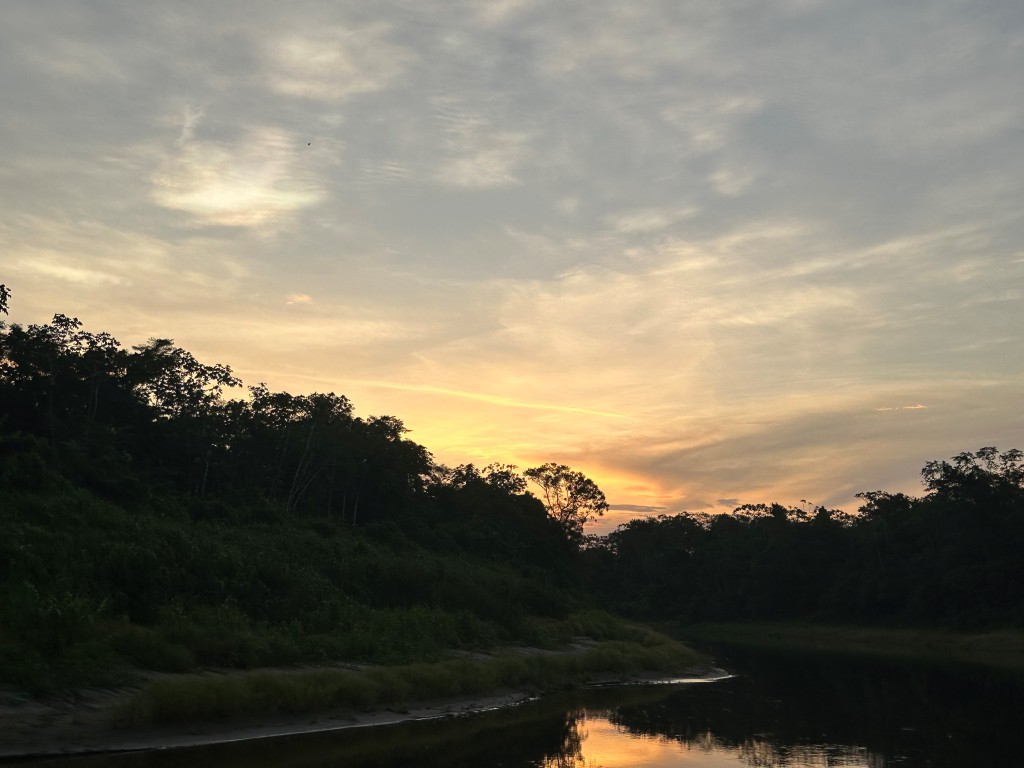
Photo Source: David Wood
Lactation, the other classic mammalian adaptation (which platypuses do, but from a pore on their skin rather than a nipple) is also a way for moms to further invest materials and energy into their offspring, but after birth. Mammalian milk is specially designed to feed the rapid growth of infants. Similarly to internal gestation, the physical contact between the infant’s mouth and the mother’s nipple allows for physiological communication and cooperation.
Both internal gestation and lactation are ways that mammalian moms invest more into their offspring than many other types of animals. They facilitate the development of infants into juveniles, setting them up for success as adults. But the fetus can only come from a fertilized egg, and it takes two to tango. If only mammalian mothers have to gestate and lactate to reproduce, what do mammalian dads do?
You may be able to guess. Since the moms are on the hook to invest in their offspring from day 1 of conception, dads just don’t. The predictions from evolutionary theory turn out pretty solid in this regard. Almost all mammalian dads don’t bother with their offspring at all. Since mammalian males can rely on moms to care for offspring (after all, if moms refuse to gestate or lactate, there’s no infant), they only have to be there to fertilize an egg. Then they can bounce. Almost all mammalian males spend their time and energy growing bigger and stronger bodies so that they can compete with each other for reproductive access to females. That’s why we see male bucks being so much larger than female does. Mammalian males have the extra pressure to be able to fight for reproductive opportunities whereas the female ability to reproduce is under different constraints.
The titis are different. Titi monkey dads do care for their babies. They care a lot—more than almost any other kind of mammal. From just days after the infant is born, it’s being carried solely by dad. Mom did still internally gestate the fetus and does still nurse the infant. This type of infant care shouldn’t be underestimated; it’s exhausting work growing a fetus inside you and even harder work making milk. But it takes more than that to raise a baby. Babies need to be kept warm, they need to be kept safe from predators, they need to be clean, and they have a lot to learn. They need to learn to socialize and find their own food. It seems like all these infant care jobs are the titi monkey dad’s responsibility.
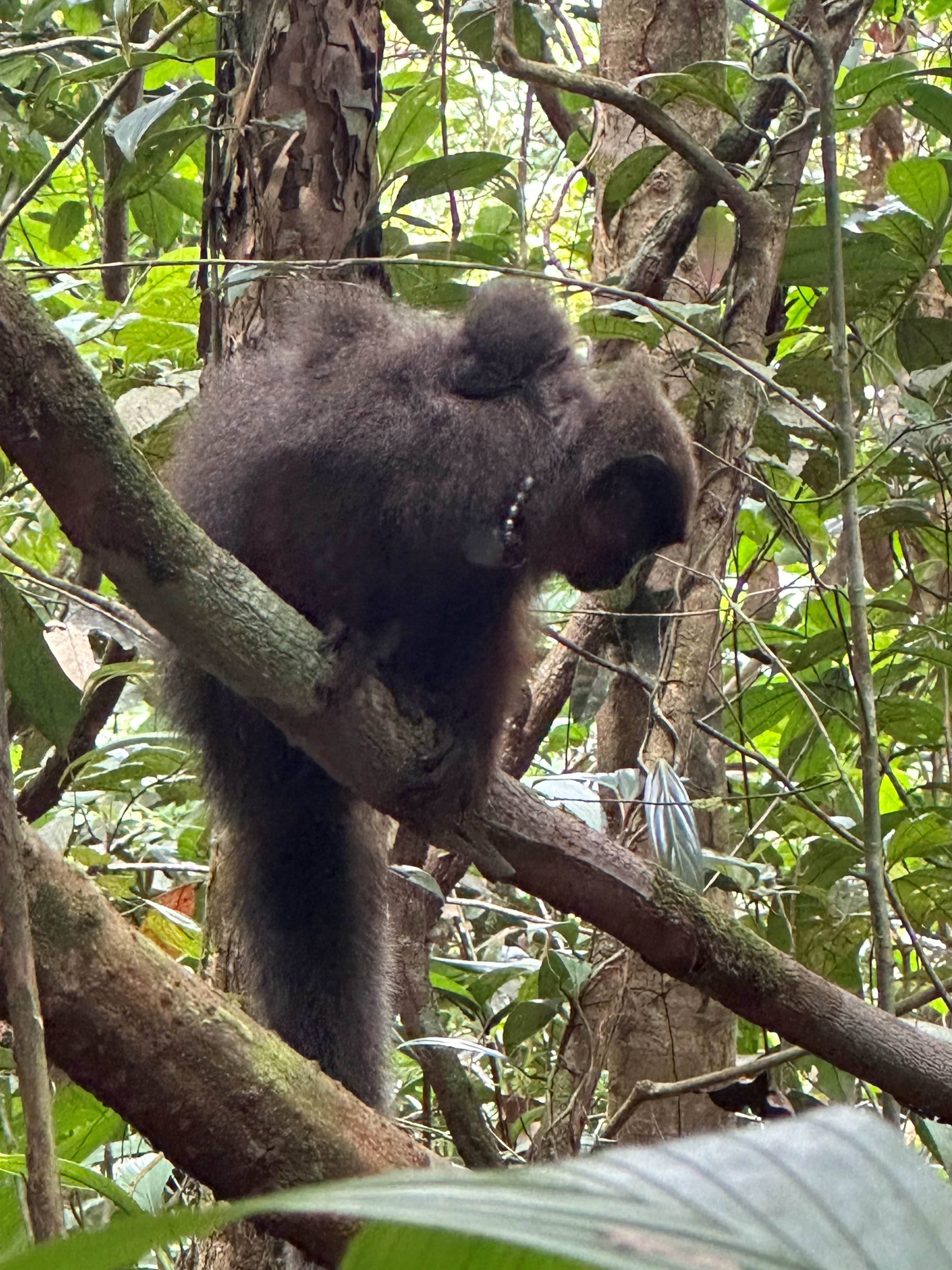
Photo Source: David Wood
As I follow groups of titi monkeys at Estación Biológica Quebrada Blanco, my field site deep in the Peruvian Amazon, I watch them file out of their sleeping tree and see the dad carrying the infant. I watch how carrying the infant makes the dad move slower than unencumbered family members. I see him resting more often, and I see his infinite patience as his infant begins to explore their body and their world by crawling all over dad. I see dad groom the infant when it crawls within reach and lick it clean when he decides its necessary. At the same time, I see mom keeping her distance from the baby. I see her approach the infant to nurse and watch as she leaves them again after the infant has had its fill of milk and crawls back onto dad. The whole reason I’m in the forest, enduring the sweat bees, is to watch how moms and dads care for their infants differently. We don’t have much infant mortality data yet, but what we do have suggests that titi monkey babies are a lot more likely to survive to adulthood than similarly sized monkeys with the classic mammalian dad-type. These titi monkey parents are effectively distributing the energetic burden of infant care across two caregivers and reaping the benefits.
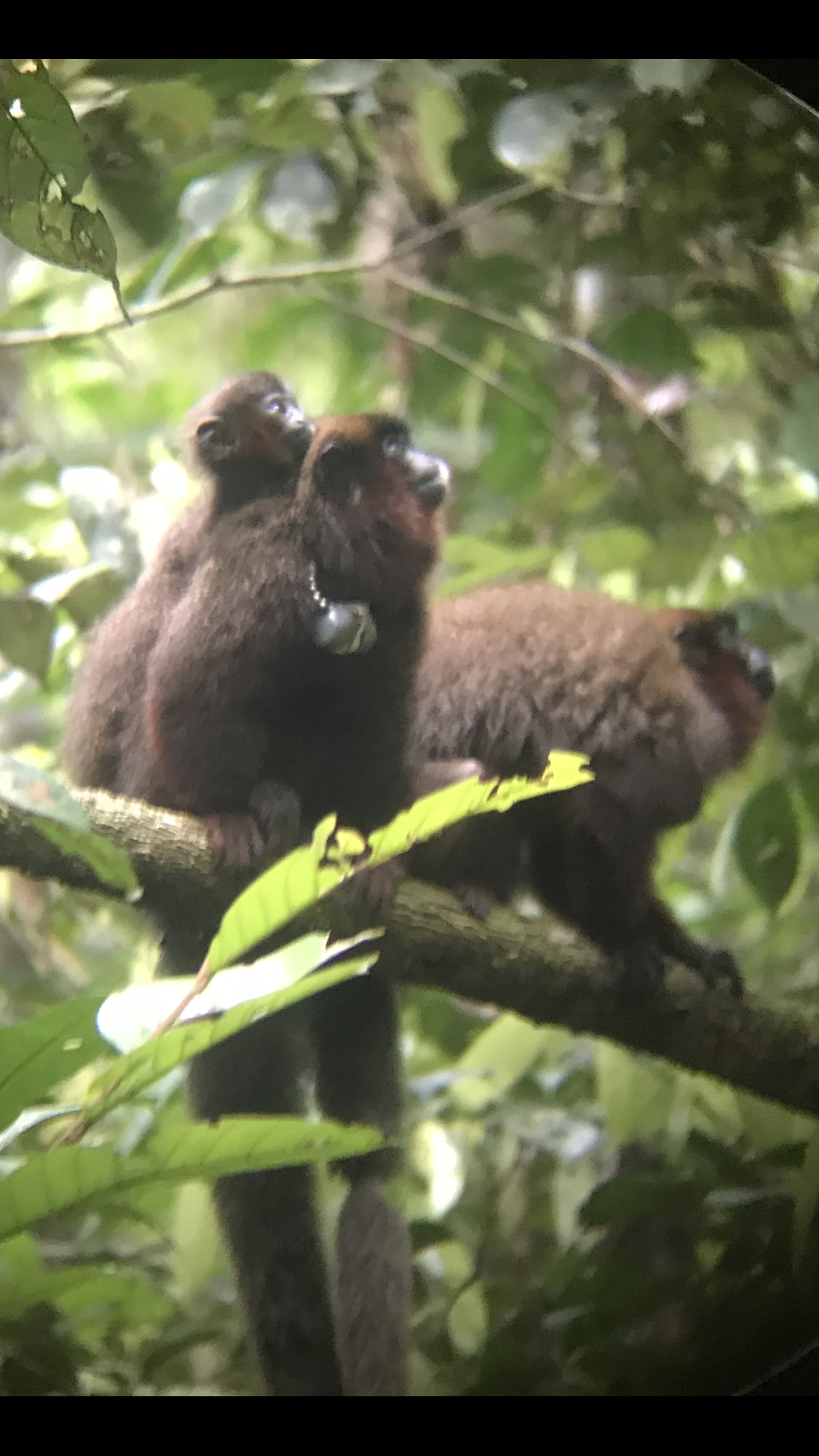
Photo Source: David Wood
In the rainforest I can watch titi monkeys provide infant care, but I can’t ‘see’ how they are really cooperating. For that, I need to be in Davis, California: the other place to find titi monkeys. When they cooperate, these monkeys aren’t distributing the behaviors of infant care (like alternating grooming bouts), they’re distributing the cost of infant care. That cost is measured in calories. At the California National Primate Research Center in Davis California, I can not only watch titi monkey parents raise their babies, I can also measure the calories they expend doing so. By combining research in the wild, where these monkeys evolved this reproductive strategy, and research in captivity, where I can measure direct energy cost, I’m hoping I’ll be able to describe how exactly this form of cooperation works. My overall goal is to describe how moms and dads distribute the energetic load of infant care. That’s something I expect a lot of us humans are interested in, and I still have a lot of work ahead to find the answers!
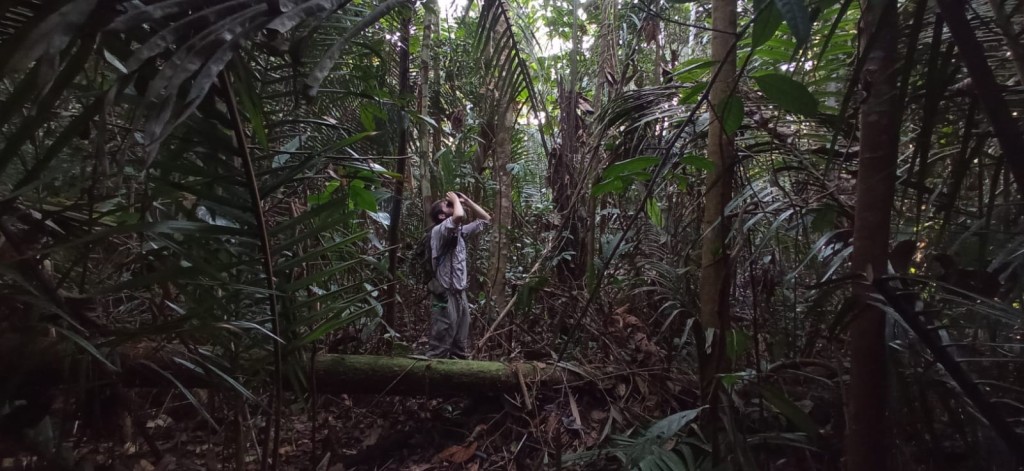
Photo Source: David Wood
David B. Wood is a Leakey Foundation grantee and 5th year PhD candidate in the Anthropology Department at Yale University, working with Dr. Eduardo Fernandez-Duque. His dissertation is titled “Behavior and energetics of infant care in a pair bonded, neotropical primate (Plecturocebus cupreus)”.
Originally published on the Ethogram, the official blog of the UC Davis Animal Behavior Graduate Group. Click here to read this story and more.


